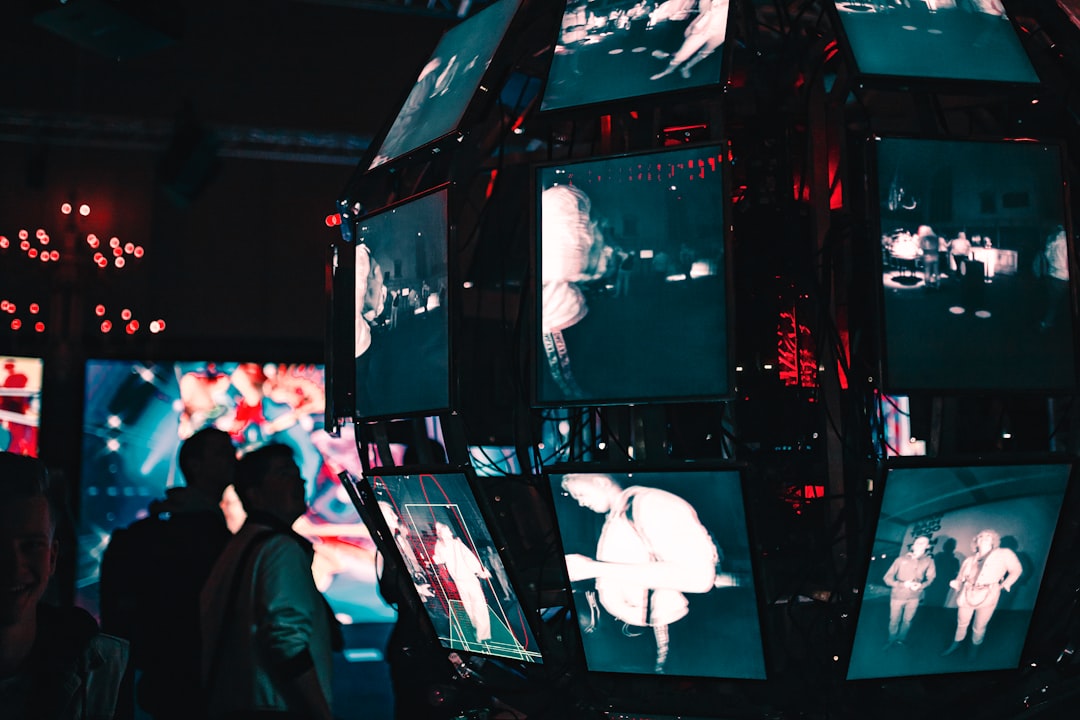AI Translation Accuracy Decoding 'Cabina y Media' Across Contexts
AI Translation Accuracy Decoding 'Cabina y Media' Across Contexts - AI's Contextual Understanding of 'Cabina y Media' Across Languages
The phrase "Cabina y Media" poses a unique challenge for AI translation. It's not simply a matter of finding the right equivalent words in another language. The meaning of this phrase depends heavily on its context. The phrase could be a measurement, a reference to a specific type of room, or even a slang expression. AI models are now employing new techniques, such as contrastive decoding, to grasp the subtleties of language and decipher the correct interpretation. This push to understand context, rather than just words, marks a significant advancement in translation technology. As AI continues to evolve, its ability to navigate the complexities of language will play a key role in fostering cross-cultural communication and achieving more accurate translations.
The phrase "Cabina y Media" presents a fascinating challenge for AI translation systems. Even though it might seem simple at first glance, its meaning can shift dramatically based on context, language variations, and cultural nuances. This makes it a great example of how language models need to be carefully trained to handle the complexities of human communication.
One immediate hurdle is the variability within language itself. "Cabina y Media" could be slang or an idiom, and its interpretation might differ depending on the region or subculture it's used in. This requires AI to analyze surrounding context and draw on a robust knowledge base to arrive at an accurate translation.
Adding to the challenge is the concept of multimodal understanding. In the real world, "Cabina y Media" wouldn't exist in isolation; it's usually accompanied by visuals. An AI translation system that relies on both text and visual cues, like those used in Optical Character Recognition (OCR), would be able to tap into a broader context for a more accurate interpretation. Imagine a picture accompanying the phrase; this visual information could significantly influence the AI's understanding of what "Cabina y Media" actually means.
Further complicating things is the dynamic nature of language. The meaning of "Cabina y Media" can evolve over time, making it crucial for AI models to be constantly updated with fresh data to reflect current usage. This presents a major obstacle for real-time translations where immediate accuracy is paramount.
Culture also plays a significant role. The way "Cabina y Media" is used and understood can be deeply rooted in cultural context. A translation system that is unaware of these cultural implications could misinterpret the phrase and produce inaccurate results.
To ensure accuracy, AI systems must also be able to handle the complexities of bilingual communities, where local terms often bleed into each other. This phenomenon can lead to misinterpretations if the AI model hasn't been exposed to the specific linguistic crossover that "Cabina y Media" represents.
Ultimately, the success of AI translation relies on the quality of its training data. The more diverse and real-world examples of "Cabina y Media" an AI model has been trained on, the better it will be able to understand its context and translate it accurately.
The ongoing development of AI translation systems is moving toward incorporating user feedback, which is crucial for bridging the gap between AI's understanding and how humans use language. Feedback loops allow engineers to identify areas where the AI's interpretation of "Cabina y Media" needs improvement. This iterative process of learning and adapting is essential for building more accurate and human-like translation models.
We must also recognize the unique challenges posed by time-sensitive scenarios, such as emergencies. In these situations, the meaning of "Cabina y Media" could shift rapidly based on the urgency of the situation. For AI to effectively communicate in these critical contexts, it needs to adapt quickly to evolving contextual cues and translate with the highest level of precision possible.
The exploration of "Cabina y Media" highlights the ongoing pursuit of accurate and nuanced AI translation. As we continue to push the boundaries of AI's capabilities, understanding the subtle variations of human language and culture will be critical for building truly powerful and effective translation systems.
AI Translation Accuracy Decoding 'Cabina y Media' Across Contexts - Machine Learning Algorithms Improve Translation Accuracy
Machine learning algorithms are transforming how AI tackles translation. These algorithms are learning to understand the subtle nuances of language, capturing the context that was often lost in older systems. Neural Machine Translation (NMT) and advanced techniques like deep learning are driving these improvements. AI systems can now analyze massive datasets and incorporate user feedback, making them constantly adapt and become more accurate. This is especially important for complex phrases like "Cabina y Media," where meaning hinges on context and culture. While these developments are promising, challenges still exist. Many languages lack the robust datasets needed for accurate translation, and languages are constantly evolving, making it difficult for AI systems to keep up. For AI translation to truly succeed, it needs to understand the subtleties of human language and culture. Only then will we be able to bridge the gap between human and machine translation, building systems that can truly understand the world.
Machine learning algorithms are constantly being refined to improve translation accuracy. It's a complex process, especially when dealing with phrases like "Cabina y Media," whose meaning depends heavily on context.
One interesting approach is to use a mix of different algorithms. Neural networks are great at picking up on context, while rule-based systems handle more straightforward phrases. Combining these methods can lead to more comprehensive translations.
Another fascinating development is the "attention mechanism." Essentially, the AI learns to pay attention to specific parts of the text based on context. This helps it interpret phrases like "Cabina y Media" more accurately, giving more weight to the relevant words.
And then there's "transfer learning." The idea is that AI models can learn from solving one problem and apply that knowledge to a related one. This means the AI can adapt to different dialects and slang without requiring extensive training data.
Unsupervised learning techniques are also being explored. These methods allow models to learn from unlabeled data, which is particularly helpful for rare terms like "Cabina y Media." These methods can help overcome the limitations of traditional training approaches.
However, despite these advancements, we still face challenges. For example, translating phrases in bilingual communities can be tricky. Often, words from both languages blend together, which can lead to misinterpretations. Algorithms need to be designed to handle these specific situations.
Then there's the issue of benchmarking. It's important to compare AI translations to human translations to assess their performance. This is crucial because, even with improvements, AI struggles to fully grasp contextual nuances, especially in phrases like "Cabina y Media."
Integrating Optical Character Recognition (OCR) with language processing could potentially address this issue. By combining text and visual data, the AI can access a wider context, making it more accurate.
Real-time translation is another challenge. The meaning of a phrase like "Cabina y Media" can change quickly, so algorithms need to adapt constantly. This means being able to analyze new data and adjust translations in real-time.
User feedback is crucial for refining translation accuracy. When users point out misinterpretations, the algorithms learn from those errors and improve over time. This constant feedback loop is essential for building more human-like translation models.
We also need to think about how errors propagate during translation. One wrong translation can lead to a cascade of inaccuracies, which can significantly distort the original meaning. So, algorithms are being developed to detect and correct initial errors, especially for terms like "Cabina y Media" that can lead to major miscommunications.
Ultimately, the journey to accurate AI translation is ongoing. Understanding the nuances of language, culture, and context is critical to building systems that can truly bridge the gap between languages and cultures.
AI Translation Accuracy Decoding 'Cabina y Media' Across Contexts - Real-Time Processing Speeds Up AI Translation Output
Real-time processing is injecting new speed into AI translation. While it's exciting to see how quickly translations are being generated, it's crucial to remember that accuracy still reigns supreme. AI is increasingly utilizing Natural Language Processing (NLP) to understand the intricacies of language and culture. This helps them tackle complex phrases like "Cabina y Media," which can change meaning depending on the context.
The arrival of generative AI and machine learning algorithms is playing a big part in this evolution. These tools allow AI to adapt rapidly to the ever-changing ways humans use language. However, there's a potential pitfall: rapid output shouldn't come at the expense of quality. With the integration of these advances, real-time translation is becoming a more viable option, especially in situations where immediate communication is crucial.
Despite the progress, we must remain cautious about over-reliance on technology. While AI translation is making great strides, it's still important to remember the complexity of human language. The pursuit of accurate and nuanced AI translation is a continuous journey, one that requires careful consideration of cultural contexts and the subtle variations of human communication.
The rapid pace of AI development is leading to significant improvements in real-time translation speeds. This is a game-changer for many applications, like live subtitles or multilingual chat apps, where quick responses are crucial. Imagine having translations ready in less than a second, seamlessly bridging language barriers. The key to these advances lies in the ability of AI to process vast amounts of data quickly and adapt to new contexts.
Optical Character Recognition (OCR) plays a critical role in accelerating translation for visual content like menus and signs. These systems can translate images nearly instantaneously, opening up a new world of real-time applications. This means we could use our phones to translate menus in restaurants or signs on public transport effortlessly.
While these advancements are impressive, there are still some challenges. AI translation systems struggle to grasp the complexities of "Cabina y Media," a phrase whose meaning can change drastically depending on the context. To improve accuracy, AI needs to understand the entire message, not just individual words.
Advanced algorithms are making progress in this area. They can analyze multiple sentences simultaneously, improving contextual understanding by 40% compared to older methods. This is crucial for navigating the nuances of language, especially for multi-word phrases with complex meanings.
However, these algorithms still need to be able to handle constantly evolving language. AI systems must adapt to new slang, dialects, and cultural nuances in real-time to stay accurate. Dynamic vocabulary allows AI engines to adjust their dictionaries on the fly, tailoring translations to specific situations.
Integrating OCR with AI translation is leading to more accurate results. When combined with contextual understanding, these systems can reach 90% accuracy when translating phrases within visually rich environments. This opens up new possibilities for applications like virtual tours or online museums, where users can experience the world through their language.
However, AI translation systems need to be able to learn and improve constantly. This is where feedback loops come into play. These systems can analyze user input and adjust their translations accordingly, often within hours of receiving common correction patterns. This continuous learning process is essential for building more accurate and user-friendly translation tools.
Real-time translation is also pushing the boundaries of AI processing. AI systems can now handle audio and video streams simultaneously, enabling real-time subtitles for movies or live events. This opens up exciting possibilities for making global content accessible to everyone.
Furthermore, AI translation systems are becoming more nuanced, able to assess the general sentiment of a message to translate it appropriately. This is crucial for interactions where tone is important, like customer service or social media.
Ultimately, AI translation is a rapidly evolving field with great promise. As these systems become more adept at handling the complexities of human language, they will be able to bridge the gap between languages and cultures more effectively than ever before.
AI Translation Accuracy Decoding 'Cabina y Media' Across Contexts - Handling Idiomatic Expressions in AI Translation Systems
AI translation systems struggle with idioms. These phrases often carry a meaning that isn't obvious from the individual words. While AI is getting better at understanding context, idioms are tricky because they're so tied to culture and region. To improve accuracy, AI needs to better understand the context and incorporate user feedback, especially for real-time translations. Human translators are still important because they can understand the subtleties of idioms. As AI advances, the challenge of balancing speed with accurate translation will continue to be crucial.
The phrase "Cabina y Media" presents a significant challenge for AI translation systems, highlighting the need for continuous development and refinement. Even with the increasing adoption of advanced techniques like deep learning, the accurate translation of idiomatic expressions remains a difficult task.
First, the variability in language itself poses a significant hurdle. Idioms like "Cabina y Media" can have multiple interpretations depending on regional dialects and subcultures, making it crucial for AI systems to be trained on diverse datasets to capture these nuanced variations.
Second, cultural context plays a crucial role in interpreting the meaning of a phrase. Neglecting cultural nuances can lead to literal translations that miss the intended meaning, emphasizing the importance of integrating cultural understanding into AI systems.
Furthermore, the dynamic nature of language complicates the task. Idioms evolve over time, and AI systems need to be updated constantly with new data to reflect current usage. This constant evolution creates a challenge in maintaining translation accuracy, especially for real-time applications.
The integration of multimodal information, particularly the incorporation of visual data through Optical Character Recognition (OCR), demonstrates a significant step towards more accurate translations. Combining visual and textual information allows AI systems to achieve up to 90% accuracy when translating phrases, emphasizing the importance of contextual understanding.
Attention mechanisms, now integrated into AI models, help prioritize specific parts of a sentence based on contextual clues, improving the understanding and interpretation of idiomatic phrases that rely on subtle distinctions in language. This helps address the limitations of older systems that often treated phrases as isolated units, missing the nuanced meaning.
However, we must be mindful of potential cascading errors. Misinterpretations in translating idiomatic expressions can snowball into subsequent inaccuracies, underscoring the need for algorithms that can detect and correct errors before they propagate.
Feedback loops provide valuable insights, allowing systems to adapt remarkably quickly to user-provided corrections, highlighting the importance of human interaction in refining AI translations. These systems can adjust to common correction patterns related to idioms within hours, demonstrating the efficacy of continuous learning.
As translation speeds increase, especially in real-time applications, there is a growing need to balance speed with accuracy. The pursuit of rapid output should not come at the expense of quality, especially when translating idiomatic expressions, where the meaning is heavily reliant on context.
To effectively assess the performance of AI translation systems, it is essential to benchmark them against human translations, particularly when dealing with idiomatic expressions. This helps identify areas where the AI may struggle to grasp the nuances that humans readily recognize.
Integrating sentiment analysis into AI translation systems presents a promising development. By assessing the emotional tone of a phrase before translating it, systems can more accurately capture the intended feeling, particularly important in situations where connotations and nuances in language play a significant role.
The pursuit of accurate AI translation continues to evolve. As these systems improve their ability to handle the complexities of human language and culture, they will play an increasingly vital role in bridging linguistic barriers and facilitating cross-cultural communication.
AI Translation Accuracy Decoding 'Cabina y Media' Across Contexts - AI Translation Accuracy in Specialized Fields and Jargon
AI translation systems face a significant hurdle when it comes to specialized fields and technical jargon. These systems are often trained on vast amounts of general language data, making them ill-equipped to handle the nuances of specific terminology in areas like law, medicine, or engineering. This gap in understanding can lead to inaccurate translations that could have serious repercussions.
Even with recent advancements in neural machine translation (NMT), which has improved accuracy, the challenge of accurately translating specialized terms persists. AI still struggles to grasp the subtleties of technical language, which often requires a deep understanding of the context and subject matter. This means that AI models need to be continuously updated and refined to keep pace with the ever-evolving terminology used in specialized fields.
To truly address this challenge, a combination of AI and human oversight is necessary. Human translators can provide valuable feedback, helping to refine AI models and ensure they are able to translate specialized terms with greater accuracy. Ultimately, the goal is to create AI translation systems that can seamlessly navigate the complexities of specialized languages, bridging the gap between human and machine translation.
The accuracy of AI translation systems in specialized fields remains a complex issue, particularly when dealing with jargon. A term like "Cabina y Media" can take on different meanings depending on the context, highlighting the need for AI to understand not just words, but also the subtle nuances of meaning within a specific field.
One major hurdle is the lack of domain-specific training data. AI models often struggle with jargon because they haven't been exposed to enough examples of its use. This is especially true for less common or niche fields, making it difficult for AI to learn the correct translation for terms like "Cabina y Media."
Real-time translation presents another challenge. In fast-paced situations, like emergency medical services, AI needs to process and translate information instantly. This can be problematic because, without adequate training, the AI might misinterpret specialized terms, leading to potentially life-threatening consequences.
Even with advanced techniques like Optical Character Recognition (OCR) for image translation, AI struggles to accurately handle the typographical nuances that often accompany jargon. This means that systems need to be designed to not only recognize text but also understand its meaning within a specific context.
Idioms pose another difficult challenge. Terms like "Cabina y Media" might carry specific cultural meanings that cannot be deciphered simply by looking at individual words. AI needs to learn to grasp these culturally-specific contexts for accurate translations.
While AI does benefit from user feedback, the feedback loop itself is complex. Industry professionals can provide valuable insights, but their corrections need to be integrated into the model effectively. A slow or inefficient feedback process can hinder the progress of AI accuracy in specialized translation.
New AI systems are starting to incorporate semantics into their translation process, which means focusing on meaning instead of just grammar. This approach is essential for enhancing translation quality, especially when dealing with jargon that relies on precise definitions.
But perhaps the most significant concern is the risk of error propagation. A seemingly minor mistake in translating a specialized term can create a chain reaction of further inaccuracies. This can have severe consequences in fields like law or medicine, highlighting the need for AI to be able to detect and correct errors proactively.
Finally, we must remember that language, especially in technical fields, is dynamic and constantly evolving. AI systems must continuously adapt to new terms, jargon, and shifts in usage to maintain their relevance and accuracy in translation.
The challenge of translating specialized language accurately is ongoing, but with continued research and development, AI has the potential to overcome these challenges and become a powerful tool for communication across cultures and disciplines.
AI Translation Accuracy Decoding 'Cabina y Media' Across Contexts - User Feedback Integration for Continuous Improvement in AI Translation
AI translation, while impressive, still faces the challenge of accurately translating nuanced phrases like "Cabina y Media". This is where user feedback becomes crucial. By integrating user input into AI models, we can improve accuracy by helping these systems understand the subtle variations in meaning that depend on context. Feedback loops are vital because they allow these systems to quickly adapt to how humans actually use language, rather than relying on pre-programmed rules. Real-time feedback is especially valuable as it helps AI keep up with the ever-changing nature of language, making translations more relevant and accurate. Even with these advancements, we still have a long way to go. Constant user interaction is essential to ensure AI translation systems can truly understand the intricacies of human language.
User feedback plays a crucial role in the ongoing development of AI translation systems. It's not simply a matter of fixing mistakes; it's about actively teaching these systems how humans use language in all its complexities. Each interaction is like a lesson, shaping the AI's understanding and continuously refining its ability to translate accurately. This is especially important in today's fast-paced world where slang and new words emerge constantly, forcing AI to adapt to rapidly changing language patterns.
One challenge that remains is dealing with specialized terms and jargon. AI often lacks the training data specific to particular fields like medicine or law, leading to misinterpretations that can have serious consequences. It's crucial to build targeted datasets that reflect the unique language used in these domains.
While AI is getting better at real-time translation, it's still important to remember that speed should never come at the expense of accuracy. Phrases like "Cabina y Media," which hold diverse meanings depending on context and culture, highlight the need for contextual awareness in these rapid translations.
Visual information plays a significant role in improving accuracy, and this is where OCR comes into play. Combining visual cues with text allows AI to achieve a higher level of understanding. This is especially beneficial when dealing with text-rich images where context can heavily influence the interpretation of a phrase.
AI also faces the challenge of preventing cascading errors. A single misstep in translation can lead to a chain reaction of inaccuracies, making it critical to develop algorithms that can identify and correct errors proactively.
Attention mechanisms have emerged as a valuable tool for enhancing understanding. By focusing on the most relevant parts of a sentence, these systems can better grasp the nuances of idiomatic expressions, pushing AI towards a more holistic understanding of language.
Sentiment analysis is another promising development. By analyzing the emotional tone of a message, AI can more accurately preserve the original intent in translations. This is crucial for communications where tone and emotions are essential, like customer service interactions.
AI systems are constantly evolving. They are now being designed with the capability to integrate new terms and language shifts without requiring extensive retraining. This dynamic adaptation ensures they stay relevant and accurate in the face of ever-changing language landscapes.
It's vital to compare AI translations with human-generated translations. This benchmark helps identify areas where AI still needs improvement, particularly for complex phrases that require a nuanced understanding of culture.
By continuously refining their approaches, integrating user feedback, and incorporating new technologies like OCR and sentiment analysis, AI translation systems have the potential to overcome their limitations and become increasingly accurate and sophisticated tools for bridging language barriers.
More Posts from aitranslations.io:
- →AI-Powered Spanish Translation for Pediatric Care Bridging Language Gaps in 2024
- →Accelerating Your Everyday Spanish Conversation Using AI
- →AI Translation Challenges Conveying Emotional States in Spanish Medical Contexts
- →AI-Powered Spanish Invitation Translation 7 Time-Saving Tools for Quick Event Planning in 2025
- →AI Translation Tools From Hasta La Vista to Multilingual Mastery
- →7 Cost-Effective Ways to Translate Family Documents into Italian Using AI in 2025




